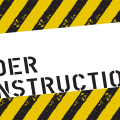1: Clear Content
Your website is like a brochure or online brochure of your company, so you want your visitors favorably capture what you want to communicate. You want people to know who he is, what it does and how to contact you.
Information should be presented in clear, avoiding using words of the local language and confusing wording. Remember that your page will be seen by an international audience. Writing for the web is different than writing for print. Check the spelling. Use short sentences. Go straight to what you want to communicate.
Establish a hierarchy for text, putting the titles in order of importance with different text sizes. Separate paragraphs with a blank line. Use bullets (bullets) or numbered lists wherever possible. Use links to expand or explain concepts in more detail.
Define in advance the topics or segments. This will allow different pages devoted to each, if warrant. Do not try to mix everything on one page. Each page should quickly present the user with a clear and sensitive content.
2: Languages
If you want to reach a global audience, consider that about 60% of users speak or understand English. Therefore, it is recommended that your Web site is available at least in the English version. Of course, if your target market is China, a wise decision would be to have a version in Mandarin.
3: Accessibility
A website should be designed so that anyone can access it, regardless of the browser type, platform, operating system you use, or disability that a user may have.
For example, while Internet Explorer is one of the most used browsers, Mozilla, Netscape and Opera are also used by millions of users and do not always display the Web pages in the same way. A good design should assure compatibility with major browsers.
With the same objective, descriptions and versions should offer alternatives to the use of text graphics, avoid combinations of colors not perceptible by some people, adjustable text sizes supported with design, print versions, keyboard usability, among others.
Do not try to prevent copying or downloading of text or graphics on your site using techniques such as disable right mouse button or by including code that does not allow save for offline view, or to prevent view source. This only works with inexperienced users.
4: Contacts & Feedback
Assuming that commercial sites the main objective is to sell or promote the sale of products or services, you must be very clear to visitors how to contact you. Links to contacts should be easily visible, indicating sufficient information on whom to contact for different reasons.
Allow your visitors to give you feed back or comments on your website or your products or services, ask questions, make a complaint, and send a suggestion or contribution.
You can also use forms as a means of receiving information from your visitors, allowing you to organize and better manage the information received. If possible, use short forms, to facilitate and do not require much time to fill.
Provide answers to frequently asked questions. That will save time visitors and to you, reducing and focusing question.




























No Comments
Leave a comment Cancel